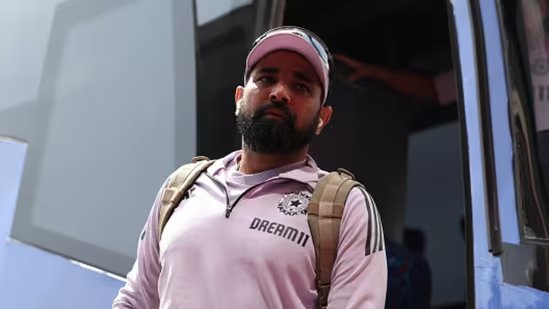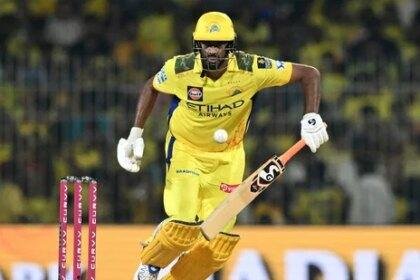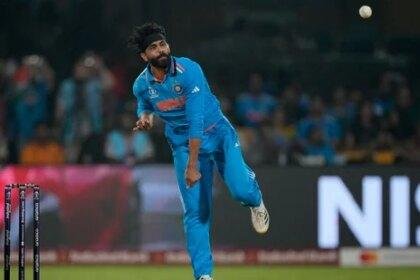Mohammed Shami‘s Quest for Redemption: Aiming for a Return to Indian Cricket
As the Indian cricket team gears up for a significant white-ball tour of Australia, veteran fast bowler Mohammed Shami finds himself on the sidelines once again. The Board of Control for Cricket in India (BCCI) has opted not to include Shami in the squad for the upcoming series, which consists of three One Day Internationals (ODIs) and five T20 Internationals, commencing on October 19. This decision has left Shami, who has been a stalwart in Indian cricket, grappling with uncertainty about his future in the national team.
A Season of Disappointment
Shami’s exclusion from the Australian tour follows a similar snub for the Asia Cup earlier this year. Despite his impressive performance in the Champions Trophy, where he took nine wickets in five matches at an average of 25.89, the selectors seem hesitant to reinstate him. Chief selector Ajit Agarkar, when questioned about Shami’s status, offered no updates, further deepening the fast bowler’s sense of isolation.
The BCCI’s reluctance to bring Shami back into the fold can be attributed to several factors. At 35 years old, Shami is not only facing the natural decline that comes with age but also a noticeable dip in his performance. His recent outing in the Duleep Trophy was far from stellar; he managed a disappointing match haul of 1/136, bowling 34 overs for the East Zone in Bengaluru. A BCCI official commented, “At this moment, it’s getting increasingly tougher for Shami to return to the Indian team. In the Duleep game too, he wasn’t too impressive, barring one odd spell.”
The Road to Redemption: Ranji Trophy
Despite these setbacks, Shami remains optimistic about his cricketing future. He has expressed a strong desire to return to the Indian team, particularly with an eye on the 2027 ODI World Cup. To facilitate this, he is making himself available for Bengal’s Ranji Trophy campaign, which kicks off on October 15 against Uttarakhand at Eden Gardens. Shami’s commitment to the domestic circuit is a crucial step in his quest for redemption.
Bengal’s head coach, Laxmi Ratan Shukla, confirmed Shami’s eagerness to participate, stating, “I had spoken to Shami six-seven days back, and he had expressed his desire to play. So, on our front, we’re optimistic as far as his availability (in the Ranji opener) is concerned.” However, the final decision will rest with the Cricket Association of Bengal (CAB), which is set to meet to finalize the squad for the opening matches.
Historical Context: The Evolution of Fast Bowling in India
Shami’s journey is emblematic of the challenges faced by fast bowlers in Indian cricket. Historically, India has been known for its spin bowling prowess, with legends like Anil Kumble and Muttiah Muralitharan dominating the scene. However, the emergence of fast bowlers like Shami, Jasprit Bumrah, and Ishant Sharma has marked a significant shift in this narrative.
Shami made his international debut in 2013 and quickly established himself as a key player in the Indian bowling lineup. His ability to swing the ball both ways and deliver yorkers at will made him a formidable opponent. However, the physical demands of fast bowling, coupled with the pressures of international cricket, have often led to injuries and inconsistent performances.
The Competitive Landscape
The current Indian cricket team is brimming with talent, particularly in the fast-bowling department. With younger players like Mohammed Siraj and Umran Malik making their mark, the competition for spots in the national team has intensified. This environment makes it even more challenging for seasoned players like Shami to reclaim their positions.
The BCCI’s focus on nurturing young talent is evident in its recent selections. The board is keen on building a squad that can compete not just in the immediate future but also in upcoming global tournaments. This long-term vision may inadvertently sideline experienced players who are struggling to maintain their form.
The IPL Factor
Shami’s future in cricket is also intertwined with his performance in the Indian Premier League (IPL). The IPL has become a significant platform for players to showcase their skills and attract the attention of national selectors. A BCCI official noted, “But to continue in the IPL, he has to play a decent amount of domestic games.” This statement underscores the importance of domestic cricket as a proving ground for players aiming to return to the international stage.
Conclusion: A Fork in the Road
As Mohammed Shami prepares for the Ranji Trophy, the coming weeks will be crucial for his cricketing career. His performance in the domestic circuit could determine whether he gets another shot at representing India. While the road ahead is fraught with challenges, Shami’s determination and experience could yet play a pivotal role in his quest for redemption.
In a sport where the balance between youth and experience is constantly shifting, Shami’s journey serves as a reminder of the resilience required to navigate the highs and lows of professional cricket. Whether he can reclaim his place in the national team remains to be seen, but one thing is clear: the spirit of competition in Indian cricket is as fierce as ever.











